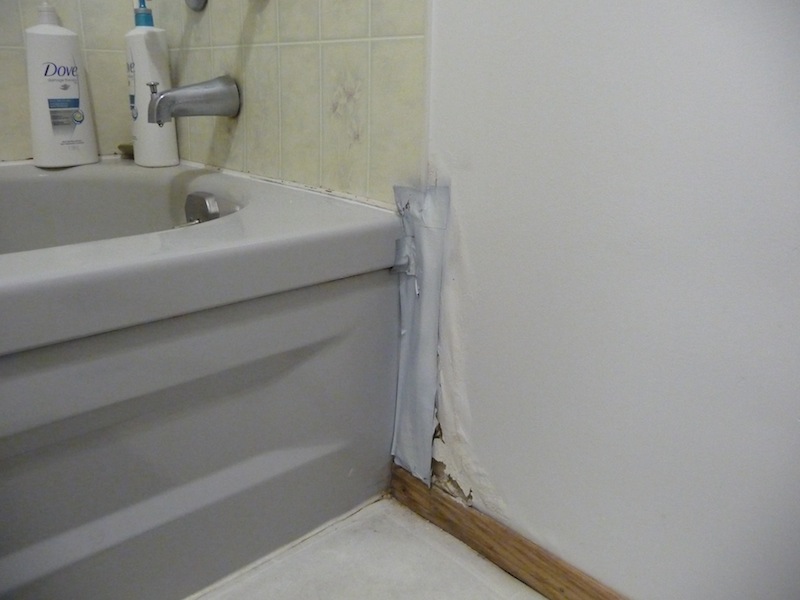What're your thoughts regarding How to Fix a Water Damage Bathroom?

The bathroom is extremely susceptible for damp buildup and also possible water damages due to the frequent use of water in it. This short article uses straightforward examination strategies to help spotting water damage hazards.
The frequent use of water in the restroom makes it incredibly prone for damp build-up as well as prospective water damage. By inspecting it regularly, you can reduce water relevant problems.
The adhering to set of inspections is very easy to do as well as ought to be done once in every 3 months in order to maintain your shower room in good shape as well as to avoid potential water damages caused by the bathtub, the shower, pipeline joints and also plumbing, sinks, closets, as well as the commode
Do not forget doing these evaluations as well as be comprehensive while executing them. Remember that these basic evaluations can save you a lot of cash by supplying early indications for water damages
Bath tub as well as Shower
The shower and bathtub call for unique interest and upkeep. Inspect the ceramic tiles and change if broken. Make sure that there is no missing out on cement between the floor tiles. Check and change split caulking at joints where the walls fulfill the flooring or the bathtub. Obstructed drains pipes as well as pipes troubles will prevent the bath tub from drying and might suggest serious troubles below the bathtub. Seek advice from an expert immediately to stop architectural damage. Take notice of discolorations or soft locations around the tub wall surfaces as they might indicate an inner leak.
Plumbing
Signs for water damage are tough to discover given that a lot of pipes are set up inside the walls.
Pay unique attention to floor covering and wall surfaces moisture and also stains as they might indicate an unseen plumbing issue. Check dampness levels in adjoining areas also.
Sinks and Cabinets
Sinks and also cupboards are revealed to wetness and moisture daily and also are typically forgotten. Examine regularly under the sink as well as on the counter top above it. Fix any drip in the catch as it may suggest drainpipe problems. Browse the sink, slow draining pipes might indicate a blocked drainpipe. Change sink seals if they are broken or loosened.
The Commode
The toilet is a prone water joint. Check the water lines as well as look for leaks around the bathroom seat, in the pipe, and under the water storage tank. If you identify any kind of signs of wetness on the flooring around the toilet, check for leakages in the toilet edge and storage tank seals.
Know that hanging commode bowl deodorants boosts the opportunities for obstructions.
Water Damage Signs In The Bathroom To Avoid Cleanup
Musty smell
This is one of the easiest signs to catch because musty smells are so odorous. The damp, earthy, moldy smell should be a big red flag. The smell will develop when moisture gets trapped in surfaces, and begins to facilitate mold growth. Leaking pipes under cabinets, inside walls, and behind shower fixtures will cause moisture to stay trapped and not dry, which will lead to mold growth and spread. As soon as you notice any musty smells in your bathroom, have it checked for hidden water damage and cleanup signs.
Visible mold
If the smell isn’t there to give it away, sometimes you will actually see mold growth. Finding mold in your bathroom is a serious problem, because mold is very harmful to your health. By the time mold growth is visible, it also means that water damage has already occurred and been present for some time. The only way the mold problem can be resolved is to find the source of the moisture and get it stopped. To safely and adequately remove mold, you need to have professionals handle the remediation. Do not waste any time in getting mold problems addressed, fixed, and sanitized so that you can protect you and your family from the many respiratory symptoms caused by mold exposure.
Damaged floors
Bathroom floors should be able to withstand some exposure to water while still remaining in good condition. However, when excess exposure or water leaks occur, they will begin to damage even the most water-resistant flooring. If you notice any cracking, bubbling, staining, or warping on your bathroom floors, there is probably a water leak somewhere causing the distortion. If you notice areas of the floor have become softer, or even have a spongy feeling, there is probably damage to the subfloor. Subflooring is typically made up of plywood. When plywood is exposed to water or moisture, it will absorb it. Once it has become saturated, the weight of the excess water will cause the wood to swell and soften. Check the floors in your bathroom frequently to catch any of these sings before they lead to damaged subflooring.
Changes on walls
When water leaks behind walls, it will cause changes in the drywall. Peeling plaster, blistering paint, and soggy wallpaper are all good indicators that excess water is building up behind the wall. Water leaking behind drywall will cause it to swell and be soft to the tough. If you start to notice gaps along the trim of your walls, or where tile meets the wall, it could also be a strong indicator that there is a leak behind the wall. Any changes, distortion, or damage on the walls should be evaluated as soon as you notice it to prevent further water damage and cleanup.

We hope you enjoyed reading our piece about Preventing Water Damage in the Bathroom. Thank you so much for taking a few minutes to read through our blog. I beg you take a moment to promote this article if you appreciated it. Thank you for your time. Visit again soon.
Customer Reviews